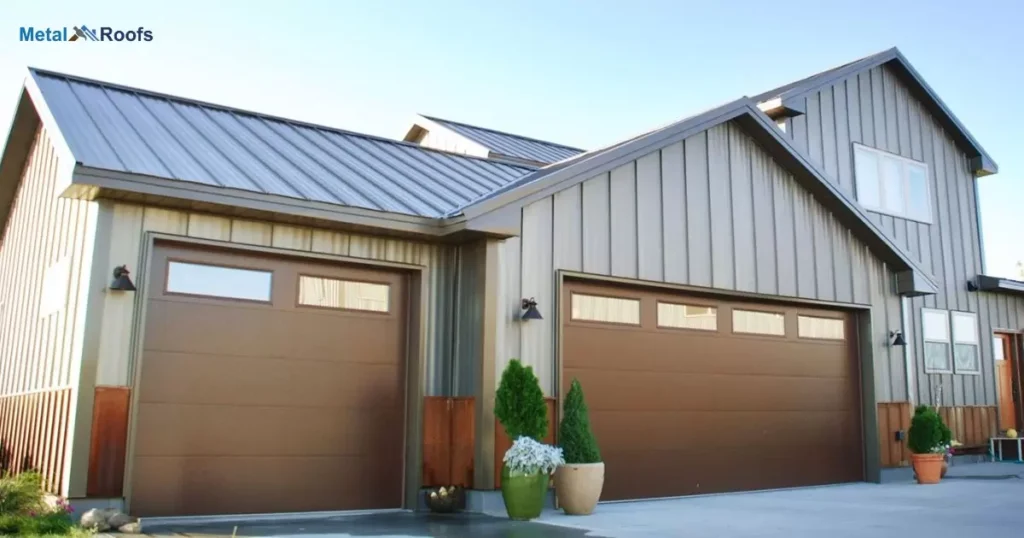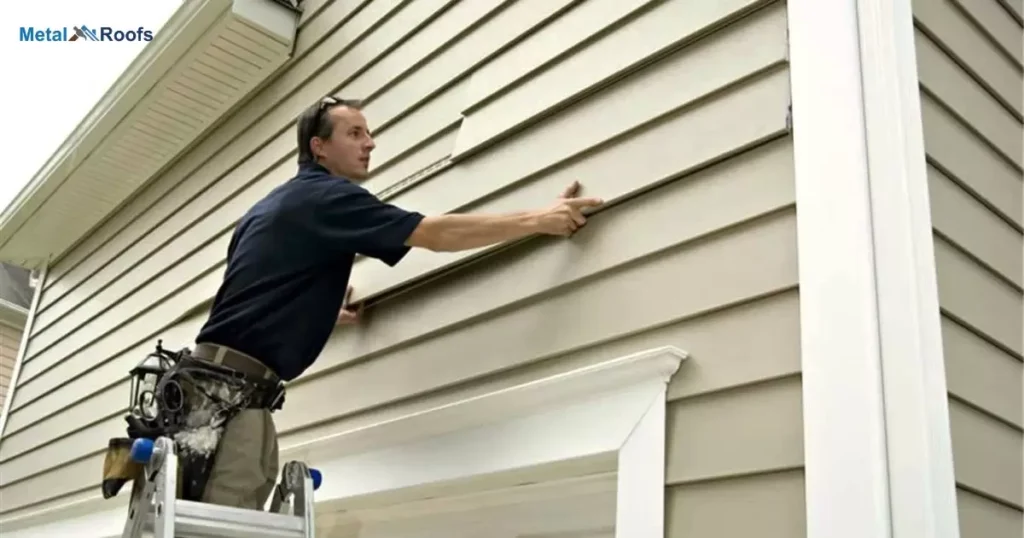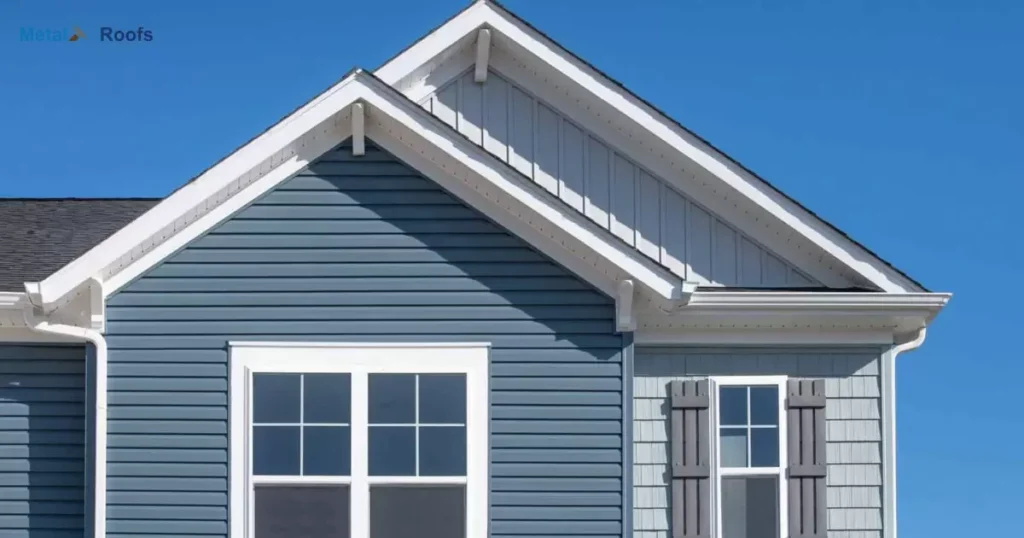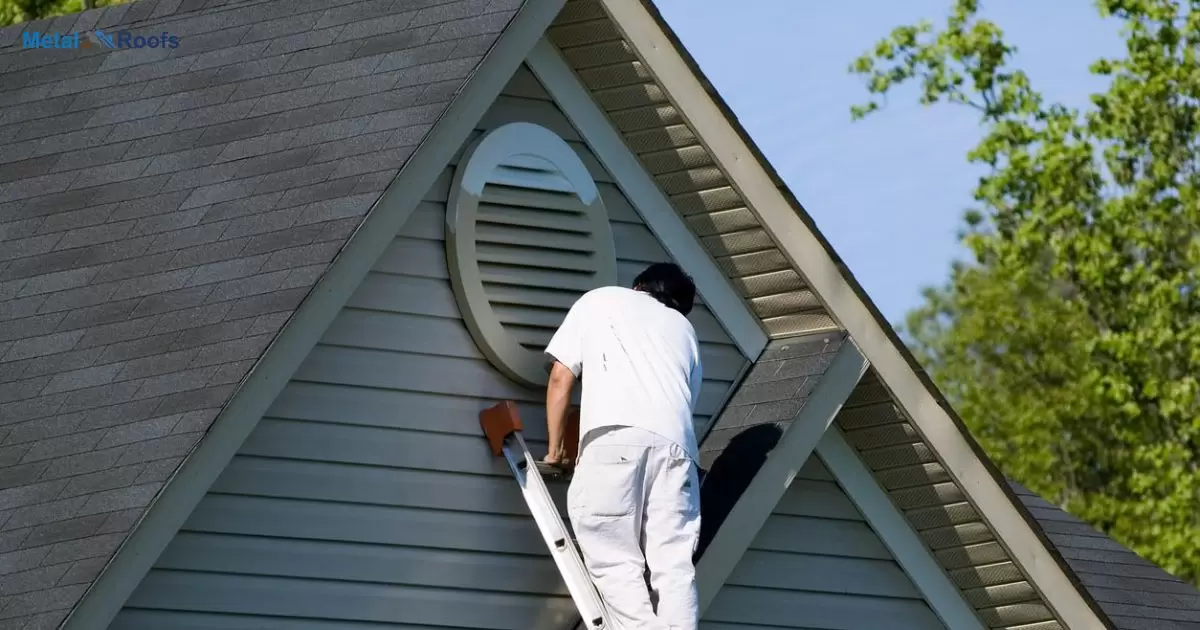Metal roofing makes durable siding. Installs over existing exterior walls. Many styles mimic other materials. Long-lasting, low-maintenance option. Interlocking panels shed water well. Fire-resistant and pest-resistant.
Metal roofing makes sturdy siding. Many homeowners consider this option. It offers durability and style. Can you use metal roofing as siding? Yes, you can. Installation requires special techniques. Proper underlayment prevents moisture issues. Vertical panels create a modern look.
Metal roofing panels, ideal for siding, offer durability and style with tight seams. Proper installation is key, but hail damage metal roofs can be a risk, emphasizing the importance of quality materials and maintenance.
Key Takeaways
- Metal roofing panels can be used as siding, offering a sleek look.
- Resistant to harsh weather and lasts for decades.
- Requires less upkeep compared to wood or vinyl.
- Non-combustible, safer for wildfire-prone areas.
- Reflects heat, reducing cooling costs.
- Often made from recycled materials and recyclable.
Metal For Siding
Metal siding is a versatile option for homes. It gives a sleek and modern look. Metal is very durable and withstands harsh weather. It also needs little maintenance compared to wood. Metal does not catch fire, making it safer. It reflects heat, helping to cut cooling costs.
Metal siding often uses recycled materials. This makes it eco-friendly. Installation needs to be done properly. This includes adding insulation and using sealants. The initial cost is higher, but it lasts a long time. You can choose from steel, aluminum, copper, or zinc. Each type has unique benefits.
Putting On Metal Roofing
Putting on metal roofing is a great choice for your home. It is strong and lasts for many years. Metal roofing can handle harsh weather. It does not need much maintenance. This makes it a smart long-term investment. Choose metal roofing for a modern look and durable protection.
Install metal roofing properly for the best results. Make sure the base is strong and secure. Use the right tools and materials. Check that the panels fit snugly. Seal the edges well to keep water out. Follow these steps to enjoy the benefits of metal roofing.
Steel Siding Panels

Steel siding panels offer a sleek and modern look. They stand strong against harsh weather. Their durability means they last for decades. Maintenance is low compared to wood or vinyl. Steel does not burn, adding safety in fire-prone areas. It reflects heat, which can cut cooling costs.
Steel siding is eco-friendly. Many panels come from recycled materials. They are also recyclable when replaced. Installation needs careful planning for the best results. This includes proper insulation and seals. While the initial cost is higher, the long-term savings are worth it. Steel panels come in various styles and finishes.
Metal Roof Installation Diagram
A metal roof installation diagram helps you understand the process. It shows each step clearly. Start with preparing the roof deck. Install a waterproof membrane. Then, place the metal panels. Secure them with screws.
Next, add trim and flashing to seal the edges. Ensure everything fits snugly. Proper installation prevents leaks. Follow the diagram for best results. This ensures your roof lasts long. Keep the diagram handy during the installation.
Metal Siding On Shed
Metal siding on a shed offers many benefits. It is strong and lasts a long time. You do not need to do much to keep it looking good. It stands up well to bad weather. It can also help lower cooling costs by reflecting heat. This makes it a smart choice for any shed.
There are different types of metal siding. You can choose steel, aluminum, copper, or zinc. Each type looks different and has its own perks. Metal siding is also eco-friendly. Many options come from recycled materials. Plus, you can recycle them when you no longer need them.
Installing Metal Siding

Installing metal siding is a straightforward process. Start by measuring the area. Cut the metal panels to fit. Attach the panels to a solid substructure. Ensure they are level and secure. Use appropriate trims to cover edges. Seal all joints to prevent leaks.
Choose the right type of metal for your needs. Steel and aluminum are popular choices. Make sure to use corrosion-resistant materials. Prepare for additional insulation if needed. Check local building codes before starting. Proper installation ensures durability and a sleek look.
Installing Tin Siding
Installing tin siding is straightforward and offers many benefits. Begin by ensuring a solid substructure for attachment. Use appropriate sealants to prevent moisture intrusion and ensure longevity. Choose from various types of tin, like galvanized steel or aluminum, depending on your needs.
Secure the panels tightly to avoid any gaps where water can seep in. Properly installed tin siding adds durability and a modern look to any building. Enjoy the low maintenance and long-lasting protection it provides against the elements.
How To Install Corrugated Metal Siding?
Installing corrugated metal siding is straightforward. Start by measuring and cutting the panels to fit the wall, ensuring they overlap correctly. Attach the panels using screws, making sure they’re securely fastened to the wall studs. Use rubber washers under the screws to prevent water leakage.
Overlap the panels according to the manufacturer’s instructions, usually about one corrugation. Install trim pieces around windows, doors, and corners for a finished look. Finally, seal all seams and edges with silicone caulk to prevent moisture infiltration.
Installing Metal Siding Horizontal

When installing metal siding horizontally, start with a level base. Ensure the first panel is straight, securing it firmly. Align subsequent panels carefully, overlapping edges to prevent leaks. Use appropriate fasteners to attach panels securely.
Pay attention to corners and edges, using trim for a clean finish. Complete installation by sealing seams and joints to prevent water infiltration. Properly installed metal siding horizontally offers durability and a modern look to your building.
Installing Metal Siding Over Osb
Installing metal siding over OSB is a straightforward process. Firstly, ensure the OSB surface is clean and free from debris. Next, measure and cut the metal siding panels to fit the dimensions of the wall. Use appropriate fasteners, such as screws or nails, to attach the siding securely to the OSB.
Make sure to follow manufacturer guidelines for spacing and placement of fasteners. Consider adding a moisture barrier or insulation between the OSB and the metal siding for improved performance.
Frequently Asked Questions
Is Metal Siding A Good Idea?
Metal siding is durable, low-maintenance, and eco-friendly, making it a practical choice for both residential and commercial buildings.
Which Of These Is A Disadvantage Of Metal Siding?
Metal siding can be noisy during heavy rain or hail, and proper installation is crucial for performance.
Can You Use Standing Seam Roofing As Siding?
Standing seam roofing can be used as siding, offering durability and modern aesthetics.
Conclusion
Using metal roofing as siding presents numerous advantages. Its durability and low maintenance make it a practical choice for both residential and commercial buildings. Metal siding offers energy efficiency and modern aesthetic appeal.
Considering the various types of metal siding available, such as steel, aluminum, copper, and zinc, there’s ample room for customization. Proper installation and attention to details like insulation and sealants ensure optimal performance and longevity.











